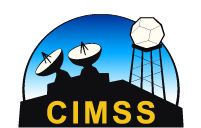Overview
Seen from space, Earth is a beautiful blue sphere. Take away the clouds and you’ll discover that 71% of the surface is covered by water. Looking a little closer you’ll see that just 3% is freshwater from lakes, glaciers, and ice caps. Of that 3%, just a quarter of a percent comes from freshwater lakes.
Freshwater lakes are a valuable resource that provide an important sense of place to people and communities. Data from buoys and satellites show that our lakes are warming, and the effects of warming lakes can cause serious problems to the ecosystems of those lakes.
About the Dataset
Dataset: 20150818 EarthNow: AUDIO The State of our Lakes
This dataset shows satellite and buoy data documenting the warming of surface waters in freshwater lakes and the effects of recent warming. These effects range from changing aquatic species, lack of nutrients in lake water, and Harmful Algal Blooms.
- Section 1: From small fishing ponds to Great Lakes all over the world, freshwater lakes are precious resources that provide an important sense to people and communities.
- Section 2: A recent NASA study shows that 95% of 167 inland freshwater lakes from all over the world have warmed by as much as 4°Fahrenheit(2.2°C) over a 24 year period(1985-2009).
- Section 3: The Laurentian Great Lakes are warming, but what is more intriguing is that the largest and deepest of the lakes, Lake Superior has warmed the most.
- Section 4: Warmer weather is leading to earlier lake ice melt and earlier stratification.
- Section 5: Another cause for concern with warmer lakes is increased algae production with more potential for Harmful Algal Blooms.
Where do I find the datasets?
-
First, check your SOS system to make sure it’s not already in the EarthNow category.
-
In addition to the normal files, there is now a “digest” section. This section in the file structure has all of the normal files compiled into one video.
-
If not, you can download the datasets and playlist files from this FTP Site.
-
Then download and use playlist files at the top of the page (or create your own) and make sure they are in /home/sos/sosrc or /home/sosdemo/sosrc.
-
More detailed information here
Credits:
EarthNow Team
NOAA
References:
U.S. Geological Survey: http://water.usgs.gov/edu/earthhowmuch.html: http://water.usgs.gov/edu/earthwherewater.html
Space observations of inland water bodies show rapid surface warming since 1985; Phillip Schneider, Simon J. Hook; 24 November, 2010: http://onlinelibrary.wiley.com/doi/10.1029/2010GL045059/full
NASA Study Finds Earth’s Lakes are Warming; 23 November, 2010: http://www.jpl.nasa.gov/news/news.php?release=2010-393
GLERL: http://coastwatch.glerl.noaa.gov/glsea/
Lake Stratification: http://www.lakegeorgeassociation.org/what-we-do/Education/Lake-George-Basics/Lake-George-Thermal-Stratification.htm
NOAA, federal partners design: http://www.noaanews.noaa.gov/stories2015/20150407-noaa-federal-partners-design-early-warning-system-for-freshwater-toxic-algal-blooms.html







